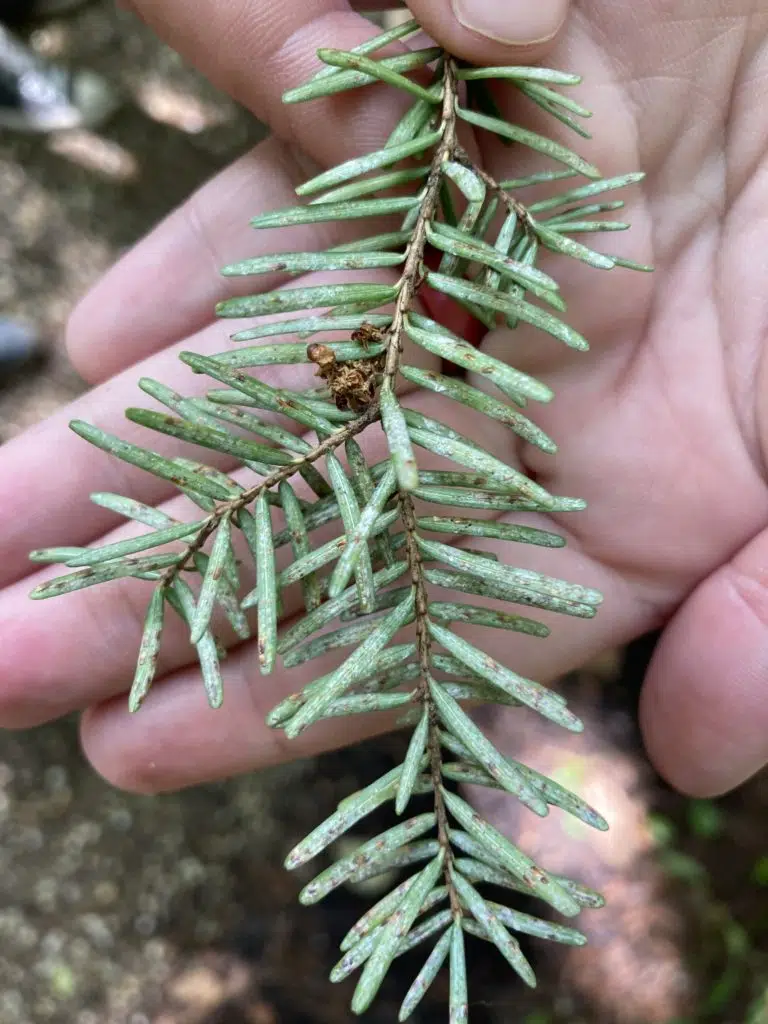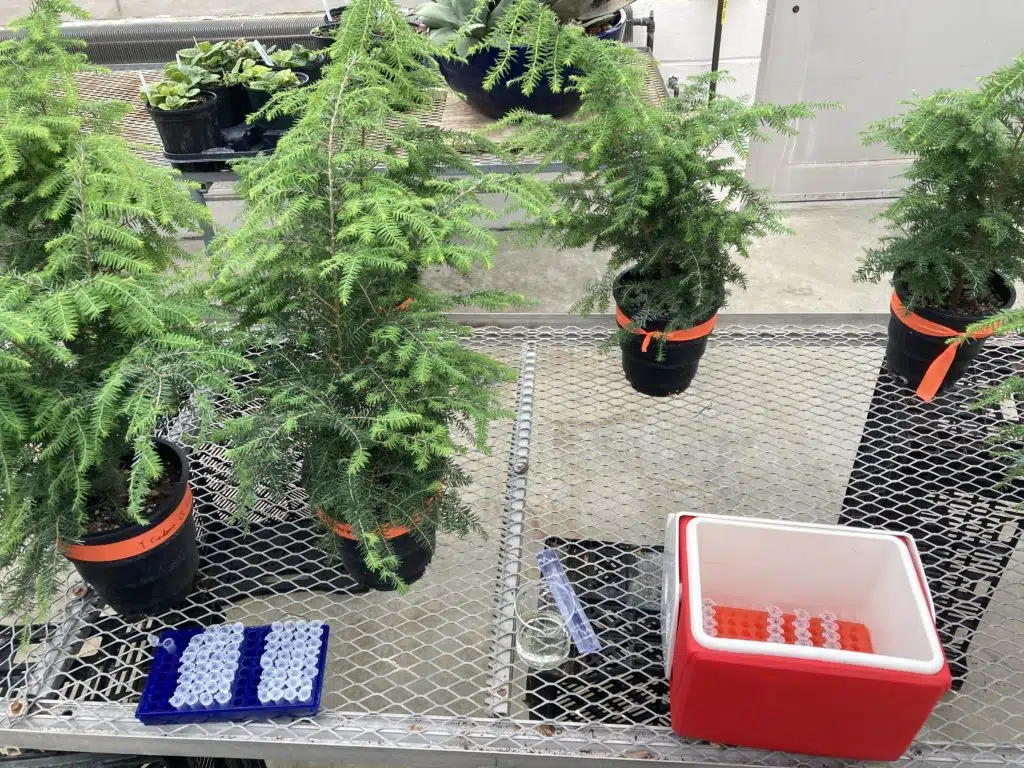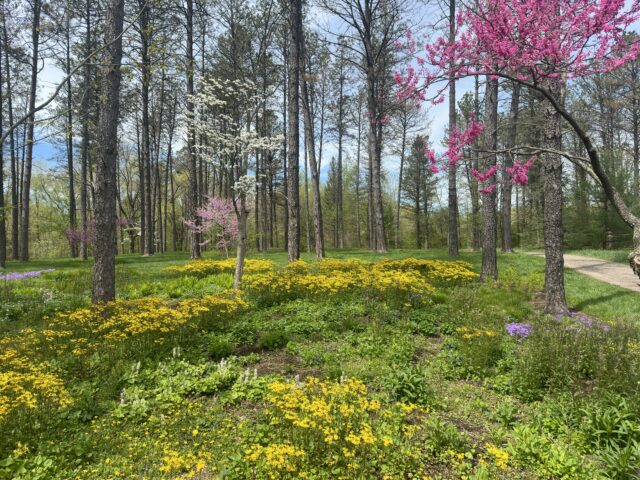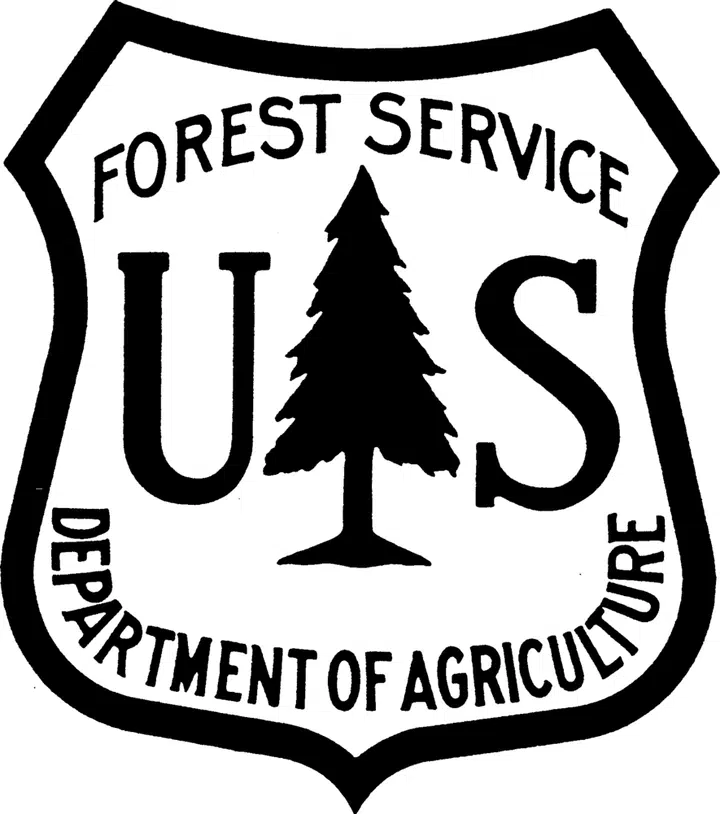
By David Burke, PhD
Many of us love our native hemlock trees (Tsuga canadensis). They are beautiful, but more than that, they serve an important ecological role in many of our forests. Where they are found along streams and waterbodies, they cool the water and maintain cold water habitat necessary for many types of aquatic life. In addition, they are important bird habitat, and many moths and butterflies are found only (or mostly) in hemlock. Quick fact: Did you know that hemlock trees can live to be 550 years old? Amaze your friends!
Unfortunately, hemlock trees in our region are becoming subject to an invasive insect (yes, another) called hemlock wooly adelgid (HWA). Originally from eastern Asia, this critter isn’t new to North America, but was discovered in Virginia in 1951. Since than it has spread throughout much of the east coast killing hemlocks and hemlock stands along the way. It has been restricted to more southern regions, as extreme cold can kill them, but with climate change and warmer winters, it is moving north and into northern Ohio. Side note: HWA is a scale like insect and, like an aphid, pierces the leaf surface and feeds on the leaf by sucking sugars and other leaf compounds.

One way to deal with HWA, at least on a limited basis, is to apply pesticide to kill the insect. This is something Holden’s conservation team is doing at our Little Mountain natural area to protect that forest. But people are concerned that the use of pesticide, like a chemical called Dinotefuran that is sometimes used, could also affect other forest critters. These critters include the fungi and bacteria that live on leaf surfaces and may help protect the leaf against other types of insects or pathogens. Hot topic: those bacteria and fungi that live on the leaf are part of what is called the microbiome.
To investigate the effects of pesticide on hemlock, those us in the soil ecology lab applied Dinotefuran as a soil drench to examine how the trees and the leaf microbiome respond. Our early results suggest that plant growth may be affected, as photosynthesis seems to decline when pesticide is applied, and the bacteria on the leaf surface are also changed by the application of the pesticide. This suggests that although pesticide can be used to kill HWA, it could also affect plant growth and the ability of the tree to resist other pathogens if the resident bacteria on the leaf surface is affected. More to come as this story unfolds with new data!

Many thanks to Caleb Lumsden, who completed much of this work last year as a summer intern with funding from the Garden Club of America and Botanic Gardens Conservation International. Also, thanks to Alyssa Zearley with the nursery team for helping us apply the pesticide. And Juliana Medeiros and her lab for help with plant measurements. As always, it takes a village.

David J. Burke, PhD
Vice President for Science and Conservation
Dr. David Burke is the Vice President for Science and Conservation at Holden Forests & Gardens, and the principal investigator of Holden’s soil ecology lab. Dr. Burke is a leader in the study of beech leaf disease, a new forest pathogen sweeping across North America from its epicenter in northeastern Ohio. His work has helped identify the means of the disease’s spread, and his continuing work aims to reveal the mechanisms of the disease as well as a path to breeding trees resistant to the trees. Although he’s recently served as a forest pathologist out of need, Dr. Burke is a soil ecologist at heart, primarily interested in the interactions between plants and the microorganisms that live in the soil like the mycorrhizal fungi that form mutually beneficial relationships with plants. These mycorrhizal fungi may be key to the health of many natural communities, so a better understanding of their diversity, how they interact with plants and other soil microbes, and how this in turn affects ecosystem health is necessary for the future sound management of natural systems.











